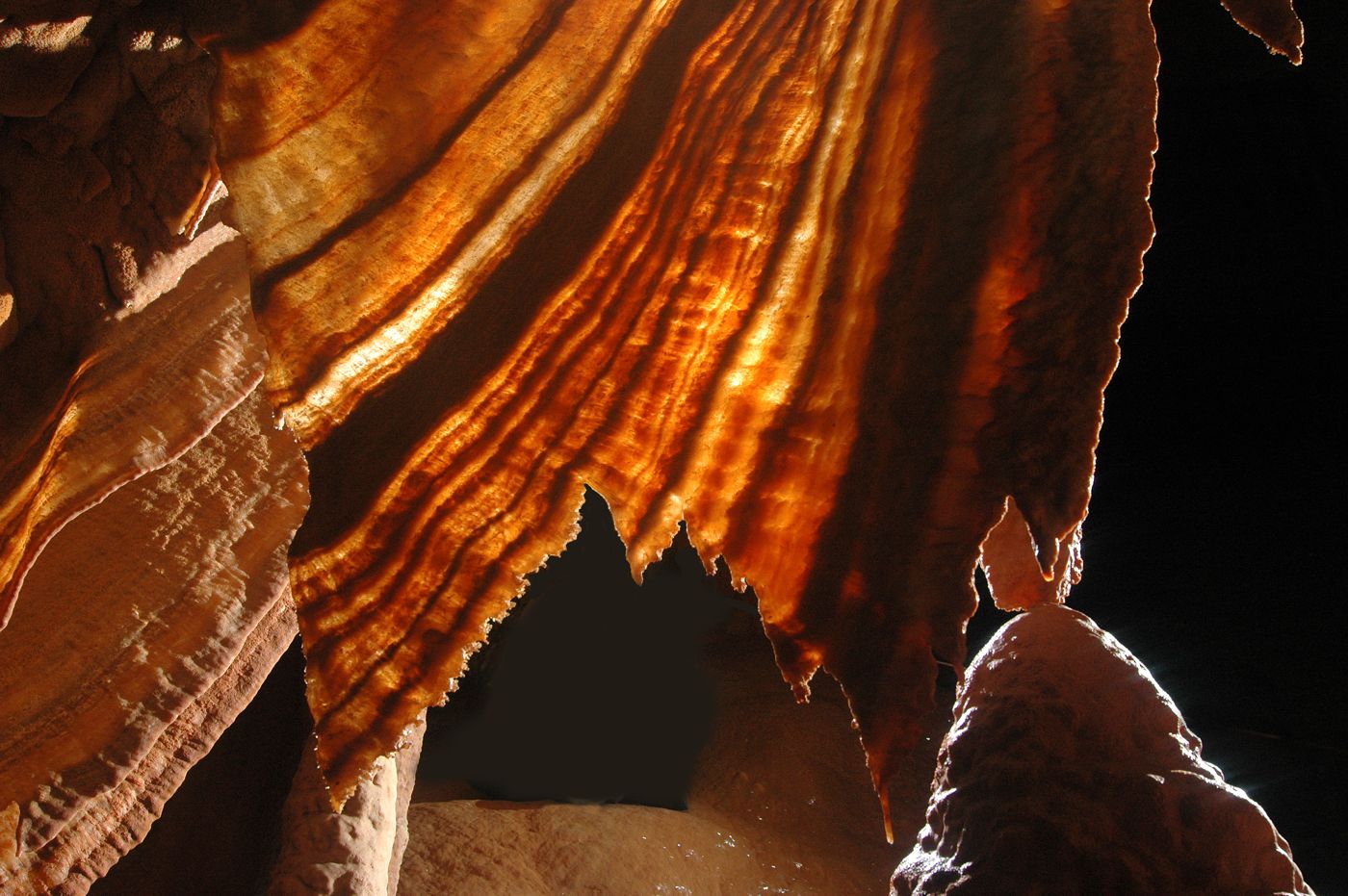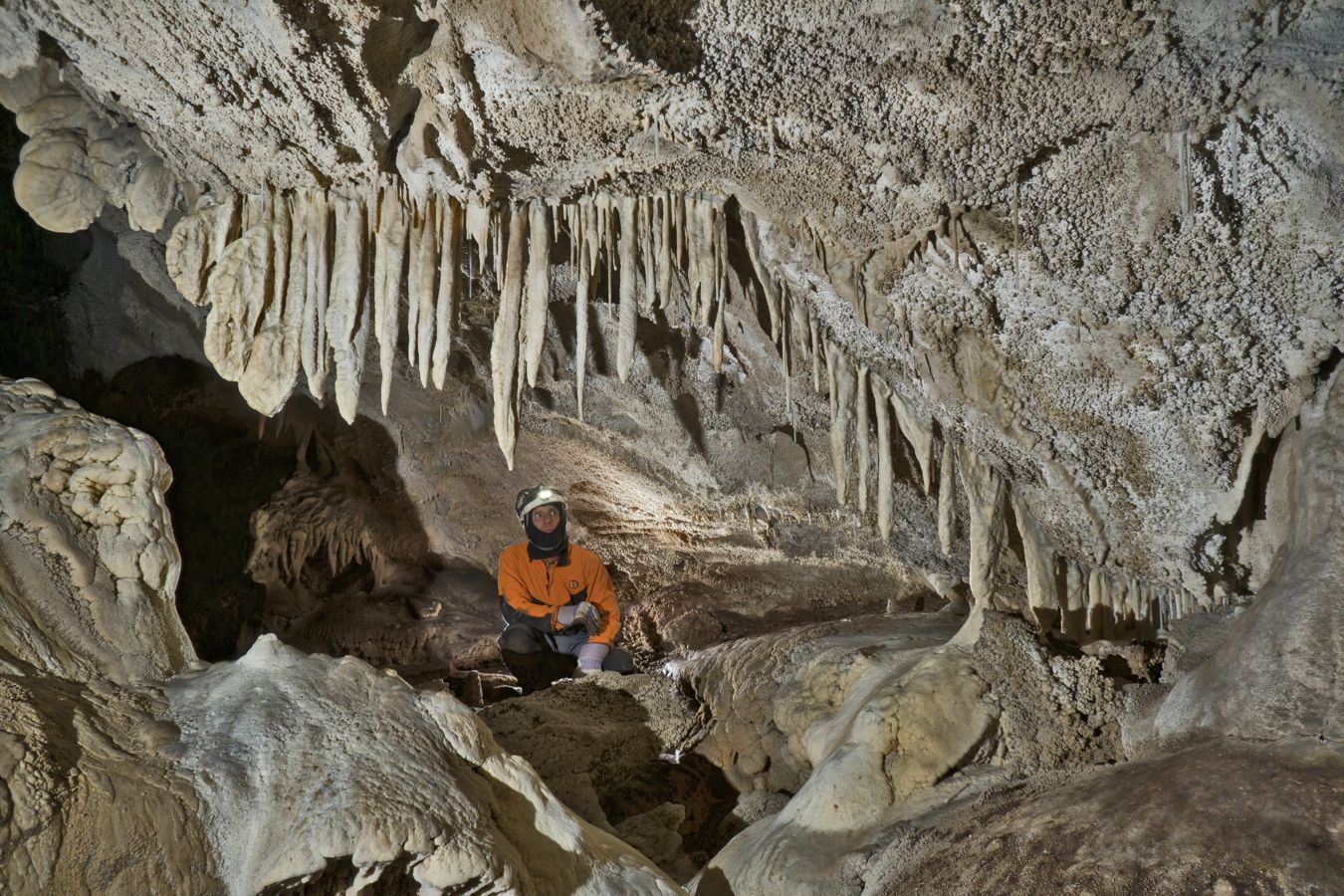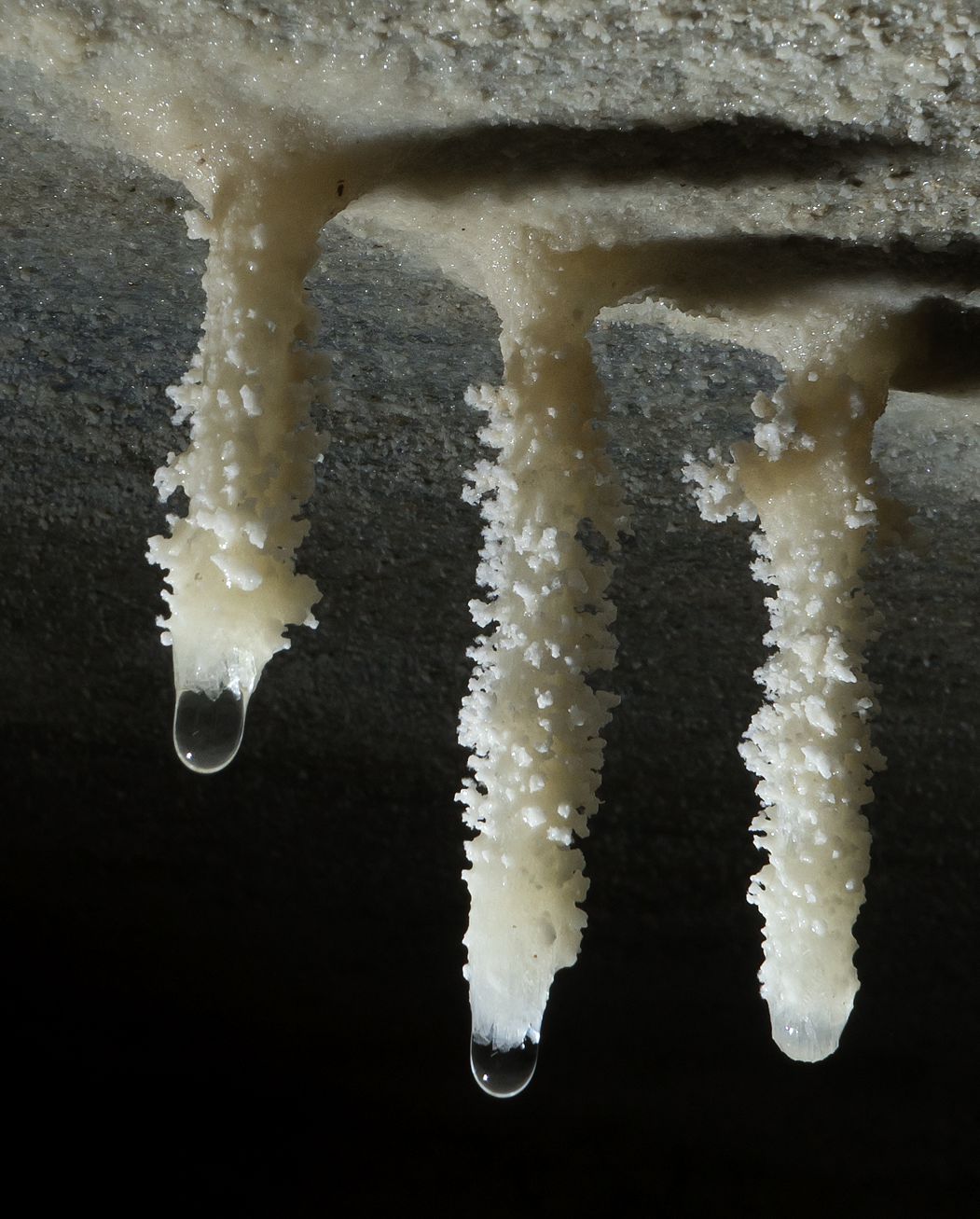
Caves can be crystalline and breath-takingly fragile
Cave speleothems, largely made of calcite, and other cave minerals vary a great deal.
Cave “pretties”
At first, California caves might just be voids inside the Earth. But in those voids crystalline mineral formations can slowly grow and form. Best known are speleothems that form in limestone caves, such as flowstone, stalactites and stalagmites and other rarer forms like helictites and shields. These are largely made of the mineral calcite and closely related minerals such as aragonite. The limestone and marble of the cave walls and ceilings is also largely made of calcite and is the sources of the minerals in cave formations.
California caves also have many different types of minerals. Some of the state’s caves are near mines and have recognizable minerals in their walls. Other caves formed under unusual circumstances with hot water and very acidic chemistry leaving behind unusual minerals. Cave explorers and researchers have been documenting these minerals for decades across the state.

Speleothems are deposited in a reversal of the process that dissolved out the cave passages. As water laden with minerals enters the open air of the cave from narrow cracks in the rock above, its chemistry changes, and it becomes less acidic. With less acid, some of the dissolved minerals crystallize out of the water making a tiny deposit onto a growing cave formation. Overall, there are many different forms and varieties found in California caves. Some, such as helictites and soda straws, are extremely delicate.

